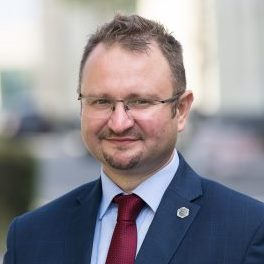Modeling of Metal Removal Processes
A special issue of Applied Sciences (ISSN 2076-3417). This special issue belongs to the section "Mechanical Engineering".
Deadline for manuscript submissions: closed (25 February 2022) | Viewed by 2045
Special Issue Editors
Interests: surface metrology; optimization of difficult-to-cut materials; sensor technology; metrology; measurement uncertainty; environmental measurement; optimization of geometrical and physical parameters of surface integrity
Special Issues, Collections and Topics in MDPI journals
Interests: machining; dynamics; metal removal processes; instrumentation; monitoring; modal analysis; sensors
Special Issues, Collections and Topics in MDPI journals
Interests: machining dynamics; modal analysis; nonlinear vibrations
Special Issues, Collections and Topics in MDPI journals
Special Issue Information
Dear Colleagues,
Although new technologies have emerged and new materials has been developed in the 21st century, material removal processes remain as key operations to achieve high productivity and precision for several parts in a broad range of sectors. Future advances in modeling should close the gap between computer-based simulations, models, and industrial processes with the aim to improve manufacturing productivity, product quality, reliability, and reduce cost and energy consumption. This Special Issue on the topic of “Modelling of Metal Removal Process” is oriented toward (but not limited to) those recent advances in the modeling of machining processes and particularly focused on predicting and optimizing key variables such as cutting forces, tool wear, and surface roughness. As a result, the works will offer some clues with respect to the optimization of machining processes and toolpath trajectories, the development of new gen technologies and processes, and so on.
- Multiphysics modeling of machining process: turning, boring, milling, drilling, broaching, grinding, etc.;
- Cutting forces modeling of complex tool geometries and under new tool-path strategies;
- Tool wear: diffusion, abrasive, etc.;
- Surface roughness predictions and subsurface integrity;
- Optimization of the machining process: cutting conditions and tool geometry;
- Machining of advanced materials, additive manufacturing, and hybrid machining;
- Machining-assisted process: cryogenic-assisted machining; ultrasonic vibration-assisted machining, laser-assisted machining, etc.;
- Artificial intelligent models and optimization techniques to improve process reliability.
Prof. Dr. Grzegorz Królczyk
Dr. Gorka Urbikain
Dr. Daniel Olvera Trejo
Guest Editors
Manuscript Submission Information
Manuscripts should be submitted online at www.mdpi.com by registering and logging in to this website. Once you are registered, click here to go to the submission form. Manuscripts can be submitted until the deadline. All submissions that pass pre-check are peer-reviewed. Accepted papers will be published continuously in the journal (as soon as accepted) and will be listed together on the special issue website. Research articles, review articles as well as short communications are invited. For planned papers, a title and short abstract (about 100 words) can be sent to the Editorial Office for announcement on this website.
Submitted manuscripts should not have been published previously, nor be under consideration for publication elsewhere (except conference proceedings papers). All manuscripts are thoroughly refereed through a single-blind peer-review process. A guide for authors and other relevant information for submission of manuscripts is available on the Instructions for Authors page. Applied Sciences is an international peer-reviewed open access semimonthly journal published by MDPI.
Please visit the Instructions for Authors page before submitting a manuscript. The Article Processing Charge (APC) for publication in this open access journal is 2400 CHF (Swiss Francs). Submitted papers should be well formatted and use good English. Authors may use MDPI's English editing service prior to publication or during author revisions.
Keywords
- metal removal
- cutting tools
- cutting force models
- tool wear
- surface roughness







